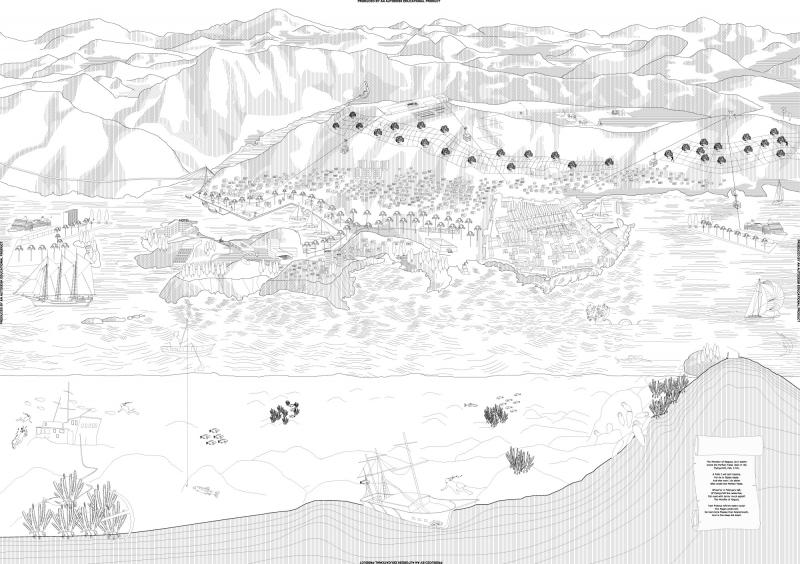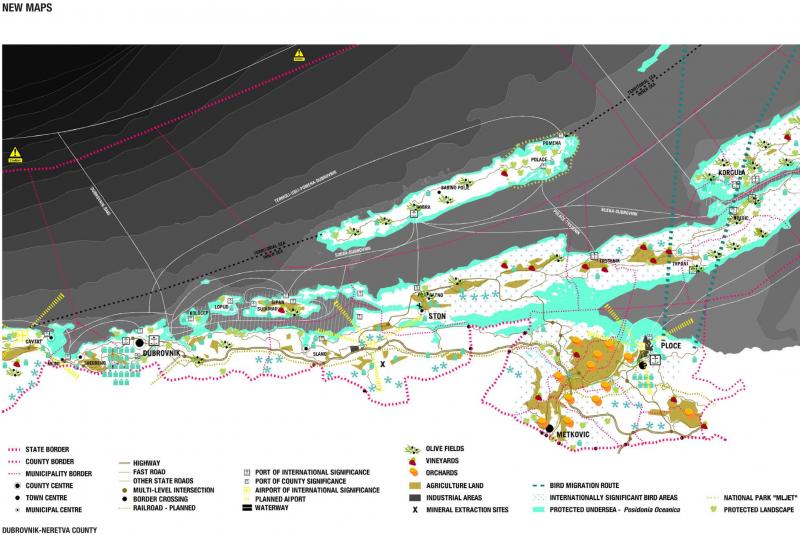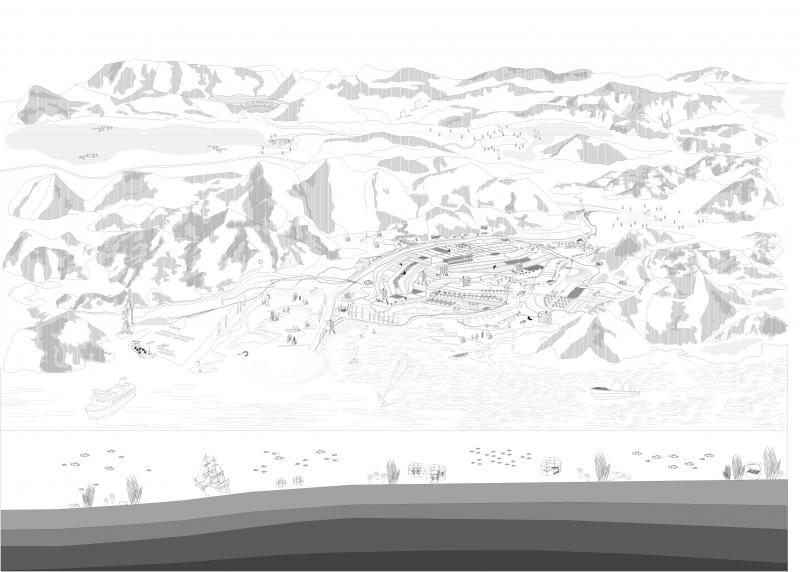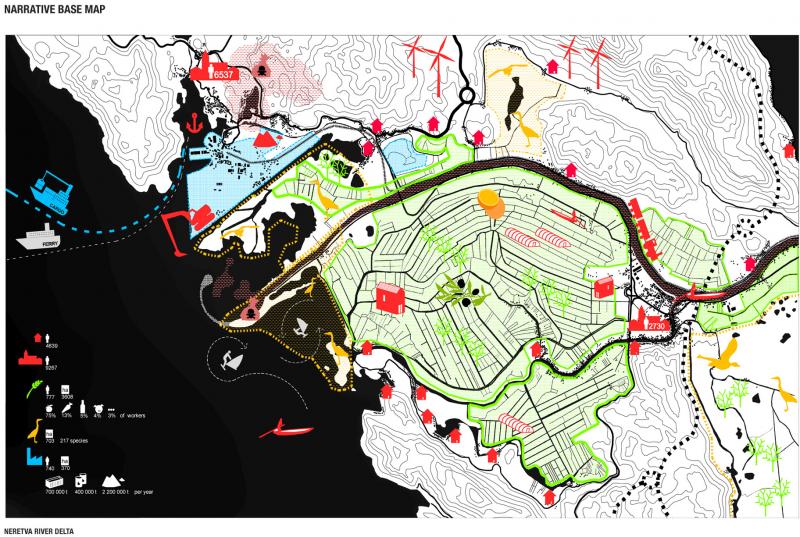



Mittelmeerland 1
The Inter University Centre
31 January–10 February 2011
Mittelmeerland investigated the future of the Mediterranean. Over three years the intention was to research six different cities, starting with Dubrovnik, and continuing with Tangier, Tripoli, Istanbul, Alexandria and Haifa. In the first of these we studied the dynamic territory of Dubrovnik’s coastline and the mutual dependencies of land and water. The area itself,
from Dubrovnik to the port of Ploce, extends more than 113km and provides an amphibious context defined by an ongoing conflict between the natural landscape, marine life and agriculture, shipping and tourism.
Both the cities are ports, yet they feature fundamentally different assets. Dubrovnik, one of the most visited cruiser destinations, is a medieval city facing the open sea, built on a cliff overshadowed by a high mountain with almost no physical connection to its hinterland. Ploce operates with large cargo ships and was built after the Second World War on the edge of an anthropised marsh facing the Peljeac peninsula, where
the Neretva river valley opens to the hinterland. The ports of Dubrovnik and Ploce are linked by a narrow coastal belt, with a sequence of islands that defines layers of the inner and open sea. This condition forces us to ask: How is the rapid growth of global trade affecting Mediterranean ports? And how can these cities along the Mediterranean coast become more
environmentally engaged?
We worked on five different areas along the coastline, and analysed existing conditions and future projections, playfully utilised small-scale phenomena, translated found conditions into large-scale urban interventions and envisioned future changes. We produced architectural portraits, urban biographies, video narratives and imaginative axonometric collages, which culminated in a publication of the workshop’s research on waterfront cities around the Mediterranean.
During the workshop a two-day symposium was held on 4 and 5 February 2011. Its purpose was to examine how the Mediterranean region could position itself as a ’territory’, one that is based on climatic and economic conditions, and subject to specific social, political and spatial dynamics and experiences. We wanted to discover similarities and differences by comparing cities. Speakers included local experts and research partners from other participating towns and ports.
Directors:
Medine Altiok graduated from the AA in 2000 and established MOCA Office for Culture and Architecture in 2006. She has been teaching at ETH Zurich since 2005.
Stephanie Tunka joined Mecanoo Architects in 2001. In 2006 she moved to London, where she is an associate partner at Foster + Partners. She has taught at TU Delft and the Welsh School of Architecture.
Krunoslav Ivanišin is an architect from Dubrovnik. He has taught at the Faculty of Architecture in Zagreb, TU Graz, and since 2007 at ETH Zurich. He is a partner in
IVANIŠIN. KABASHI.ARHITEKTI.